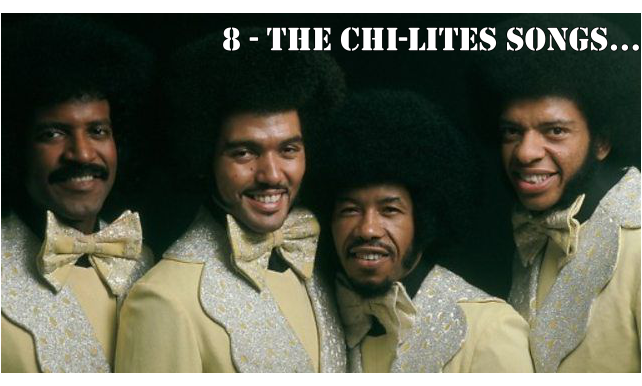(ThyBlackMan.com) Their History
The landmark Brown v. The Board of Education of Topeka, Kansas unanimous Supreme Court decision rendered on May 17, 1954 stated that “separate educational institutions were inherently unequal.” In 1955, the Supreme Court would hand down another landmark decision, in Griffin v. County School Board of Prince Edward County, the high court would affirm Brown and went on to rule that segregated educational institutions were now required to integrate with “all deliberate haste.” This case would later be referred to as “Brown II.”
The University of New Orleans, or LSUNO as it was called at its inception, was created as a division of the “all-white” Louisiana State University System by Act #60 of the 1956 Louisiana Legislature as a result of a “citizen’s movement” to bring tax-supported higher education to the “white” populace of the Metropolitan Area. In “all deliberate haste,” within a year, a site was acquired at a recently abandoned Naval base located on the shores of Lake Pontchartrain and while the intent was for LSUNO to be another segregated institution for white students, it was integrated from the start at the order of U.S. District Judge Herbert Christenberry.
Judge Christenberry, a New Orleans native and Loyola Law School graduate was a no-nonsense, law and order judge, who was quoted in a 1965 Time magazine article as saying, “you should do everything under the law to guarantee the constitutional rights of negroes.” He insisted that the new university admit African-American students who met entrance requirements; and thus, when classes began in September of 1958 LSUNO became the first racially integrated university in the South.
Southern University at New Orleans (SUNO) was created as a division of the “all-Black” Southern University of Baton Rouge System by Act #28 of an extraordinary session of the Louisiana Legislature in September 1956. In September of 1959, in spite of the recent Brown decisions ordering desegregation, SUNO opened its doors on a 17-acre stretch of land located in the “Pontchartrain Park” subdivision as a segregated “all-Black” university. SUNO would remain a segregated institution until a racial discrimination  lawsuit was filed in 1964 by a local school teacher. Mrs. Virginia Welch Cox, a white St. Augustine High School teacher who needed college credit to attain her teaching certification, applied to SUNO only to have her application ignored. She then filed a civil action against the school alleging racial discrimination and the resulting court decision (i.e. Civil Action #14217), forced SUNO to integrate its campus.
lawsuit was filed in 1964 by a local school teacher. Mrs. Virginia Welch Cox, a white St. Augustine High School teacher who needed college credit to attain her teaching certification, applied to SUNO only to have her application ignored. She then filed a civil action against the school alleging racial discrimination and the resulting court decision (i.e. Civil Action #14217), forced SUNO to integrate its campus.
Vehemently opposed to having two institutes of “higher learning” in a post-Brown era literally separated by a boulevard, both covertly operating a segregated system, in 1969, the New Orleans Branch of the NAACP as well as the Urban League of New Orleans called for the immediate merging of LSUNO with SUNO. Their voices fell on deaf ears.
The Parents and Their Stepchildren
Over the course of the past 50 years, the relationships of LSU with the University of New Orleans as well as Southern University of Baton Rouge (SUBR) with SUNO have been tenuous to say the least. Arguments over funding, staffing, capital improvements and academic programs etc… have at times bordered on all ut warfare… prompting both student and faculty protests on both New Orleans campuses and in the case of UNO, the acrimonious stripping of the LSU logo from its image. According to Sidney Degan III, president of the UNO International Alumni Association, “The inappropriate treatment of UNO by the LSU System, in terms of both academic and funding inequities, has been harmful.” Furthermore, to understand the disdain and at times outright contempt with which the student body and faculty at times holds towards SUBR, one only needs to spend a day in Baton Rouge visiting the magnificent structures, facilities and manicured landscapes which compose the campus of Southern of Baton Rouge and then returning to New Orleans to the antiquated, paltry and mold-contaminated buildings – many of which have yet to be repaired nearly six years post-Katrina – that make up SUNO’s campus. Yet now in the midst of a possible merger we have the governor pushing for his alma mater to reign over the proposed new system and the Louisiana Legislative Black Caucus fighting for SUBR to remain at the helm – both absent parents are now fighting for custody of the stepchildren. It boggles the mind to think that in a state that ranks in the top five percent of the least-educated populace in the nation, the governor is trying to rationalize cutting education and at the same time trying to attract new business.
The Real Issues Against Merger
The most common response from a UNO supporter opposed to a merger is that SUNO’s dismal graduation rate will harm their reputation. According to the most recent statistics, SUNO suffers from the worst graduation rate in the state. Out of 100 undergraduate freshmen who enroll at SUNO, at present only eight – that’s right EIGHT – go on to graduate after six years of study. How does one rationalize this? Yet while UNO cries foul its graduation rate for the same time frame is only 21 percent, which means four out of five of its incoming freshmen FAIL to graduate within the same time frame. Is the pot really calling the kettle Black?
The unspoken truth to the interested observer is that if the two schools were to merge, UNO will no longer be a “majority-white” institution – if the current enrollment demographics are correct, a SUNO-UNO merger would bring into fruition, a “majority-minority” student body and one of the most diverse universities in the nation.
SUNO’s prima facie case against a merger is that it would begin the process of dismantling HBCUs in Louisiana and a fear of exposing our kids to institutional racism. Prior to being amended in 1965 to include SUNO, the term HBCU was and should always be reserved for those colleges and universities which were FORCED to segregate and provided educational opportunities for African Americans which they would not have otherwise been provided access. It should be used to pay homage to the sacrifices and successes “in spite of” an illegal and immoral period in U.S. history.
As much as it pains this writer to say this, and I am and will always be a proud SUNO alumnus – SUNO does not fit this description. While schools such as Xavier and Dillard came into being as a result of “Jim Crow” segregation, when SUNO opened its doors in September of 1959, the Brown decisions had already been affirmed, the first integrated university had already opened its doors and there was no longer a need for having a segregated “all-Black” university – it was by choice moreso than mandate. Of the 105 colleges and universities claiming HBCU status in this country, only two universities came into existence after the Brown decisions: Southern University of Shreveport and SUNO.
We are Better Than Floyd’s
As a child growing up in Carrollton in the 70s, my neighborhood, not unlike many neighborhoods in New Orleans, was a diverse mix of people. Yet it was what I now call “creative-segregation.” Three or four blocks of African-American families then three or four blocks of Anglo American families, and the pattern repeated. While we and our “white” neighbors were a stone’s throw apart, we were miles apart in our distinct values, cultures and beliefs. While we all pretty much got along, in the midst of my neighborhood sat a corner bar and restaurant named Floyd’s. Floyd’s stuck out like a white elephant because in the middle of this Black community – emblazoned on the white doors of this all-white building was a sign that read “Whites Only.” While we couldn’t enter the building to eat, Floyd’s did have a window on the side where he would sell the other neighborhood kids “a Coke and a Smile.” One day the city decided to cite Floyd’s and ordered Floyd’s to remove the sign. So we laughingly watched as Floyd painted over the door with a single coat of white paint and then to our shock, with the words “Whites Only” still visible underneath he wrote “Private Club Members Only.” Floyd refused to change with the times and would eventually close down its establishment before he would integrate.
Consider that today we have nearly as many young African American students who attend SUNO as we have attending UNO yet we have more young African-American students go on to earn degrees from UNO – including our esteemed former first family Marc and Michelle Miller-Morial – than we have graduating from our HBCU. How then can we claim a fear of “institutional racism“?
All Things Considered, Why SUNO Should Remain Separate and Apart !!!
SUNO has a definite purpose and provides an invaluable service to our community. Up until SUNO’s post-Katrina administration decided to attempt to change the face of SUNO’s student body, SUNO for decades catered to the needs of older, working-class, primarily, but not exclusively, African-American moms and pops who sought to earn a college degree – they were “non-conventional” students. My dad, a social worker, my brother, an attorney, and myself all earned our undergraduate degrees from SUNO as adults working full-time jobs and providing for our families. Marc Morial tells a story of the first time he lectured at SUNO. Fresh out of law school, in his late twenties, when he entered the classroom he was shocked to see that he was the youngest person in the room. Unlike other colleges and universities who relegate working adults to a second-class status by offering night and weekend courses; SUNO’s liberal scheduling, affordable tuition, and ambient “environment of mature adults” allowed working folk a level of kinship and comfort along with the opportunity to take classes according to their schedule and earn a college degree of which may have not been possible otherwise.
When one truly understands this, one can understand why in comparison with other schools, on the surface SUNO is depicted as a failing school because of its seemingly dismal graduation rate. What the spin doctors fail to mention is that your typical college student is an 18- to 21-year-old young adult still dependent on his/her parents for support; contrarily, prior to Katrina, your typical SUNO student was a 30- to 40- year-old working adult, supporting a family – oftentimes including that 18- to 21-year old child attending UNO. As-such, and because the priorities and responsibilities of a working adult are far more significant than those of the 18- to 21-year-old child that she/he supports, it often takes longer for a SUNO mom or pop to earn their degree. Over time however, SUNO’s graduation rate improves substantially.
Gumbo Anyone?
What makes New Orleans New Orleans? Is it the food, the music, the culture or the Mardi Gras Indians? Or is it all of the above and more? It has often been said that New Orleans is unlike any other city in the South or the country for that matter, but what makes us so unique? Personally, I think it’s the gumbo… not the gumbo soup “yo mama” makes, but all of the various cultures, people, and institutions which make-up the whole. Each component serving a purpose and each adding its distinct favor to the mix. Did you get it or did you miss it? Instead of New Orleans politicians, administrators, and diehard alumni fighting the dismantling of systems which should really never have existed, the focus should instead be on understanding each institution’s distinct purpose and then preserving their integrity; insisting on greater accountability from the various administrative staffs to improve graduation rates; and demanding autonomy by extricating both SUNO and UNO from the ties that bind them to a second-class status making them subservient to both LSU and SUBR.
Written By Michael A. Radcliff
Official website; http://www.louisianaweekly.com/

















Leave a Reply